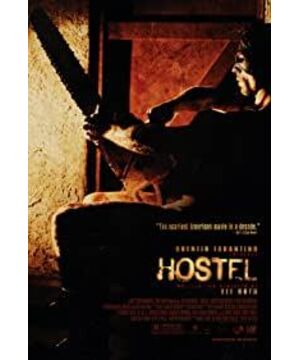FS 201 12 Feb 2013 Hostel and Andrew Tudor's Why horror? The Peculiar Pleasures of a Popular Genre. To answer the question of why watching a movie brings pleasure, there are not only some general explanations which are applicable to the horror genre, but also some specific accounts based on different social contexts, which Tudor consider as three levels of analysis. According to Tudor, the enjoyment of the genre comes from the curiosity of wondering what is going to happen next. This, so called, narrative tension presents a distinctive stylistic way which causes the audience to physically manifest responses (49). In Hostel, the first half is like an absurd trip, filled with drugs and sex, in Eastern Europe. The two young students add to the foreign impression of Americans in the remote East European country.They are unafraid of making trouble because they come from America, a strong imperial country in the world. When they arrive in Slovakia, the desolate surroundings of the small town far from the civilized modern city foreshadow their miserable experiences in the future. Also, earlier in the train ride, the middle-aged man, eats salad with his hand foreshadowing the later bloody torture scenes. The horror builds slowly but compresses tightly, which make audience curious what fearful things will happen to characters in this remote town. And when the horror Finally comes, it is presented in a vivid and direct way. The dark closed room with all kinds of knifes and tools, the desperate screaming and crying juxtaposed against to the relentless mechanical sounds, and the obsolete factory under the gloomy sky are the distinctive horror way of mise-en-scenes.With the narrative tension, it is likely to arouse physical response from the audience, like hiding one's eyes and becoming nauseous, especially in the scenes of body torture and shots of horribly mangled bodies.
The expected monstrosity in the movie is represented by the Eastern European people in the remote town, from the governors in the black suits who look like upright reputable authorities to depraved women who seduce and sell the two American students to the rich people, and even the little kids who rob and kill just for candy. The outer appearance of the town is beautiful and peaceful, but its middle layer is full of naked and overt lust and avarice, and its deepest level is filled with pure hatred and killing. This portrait of Eastern Europe employs Tudor's three level of analysis. He points out that on the second level horror genre demonstrates the changing character of transgression, relating to larger social and cultural currents, with the expression of postmodernism (51). Xenophobia and anti-communism are clearly evident in the Hostel.The terrible constitutional system, irresponsible police and justice system, and underdeveloped local economy, show the former communism influence. For example, the old tall chimney and deserted factory; give this town a particularly horrible impression of communism. The people being killed are from America , Japan and Northern Europe, which are developed capitalist countries in the world. People who assist and conduct the killing are from Eastern Europe and Russia, which are related to communism. The overt contrast indicates the abhorrence of communism and also the fear of the capitalist countries being destroyed by communism. This is reminiscent of the social background in the world a couple of decades ago, like the Eastern European upheaval, Soviet disorganization and the rise of capitalist developed countries.This fear is portrayed by demonizing normal looking people and taking a seemingly peaceful town in Eastern Europe and showing their cruel and ruthless killing method as a way to kill people from capitalist countries. Their hostile abnormality is the product of abominable communism.
View more about Hostel reviews











